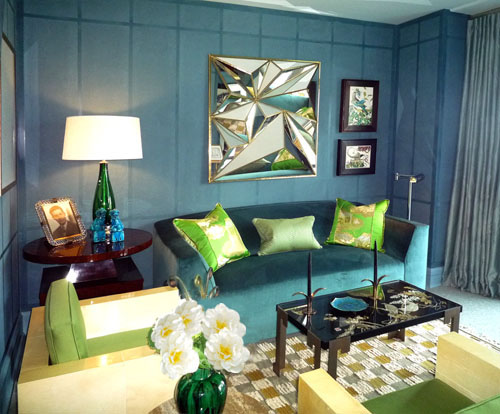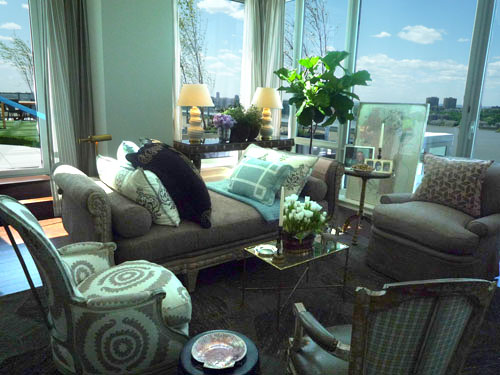Gold Coast Mansions: Coe Hall
 Alexia Rossetti
Alexia Rossetti  Wednesday, June 13, 2012 at 10:00AM
Wednesday, June 13, 2012 at 10:00AM  (Reception room at Coe Hall)Deep in the famed Gold Coast lies a grand estate that even Jay Gatsby would feel at home in. The estate is the 400+ acre Planting Fields in Oyster Bay, Long Island, with the mansion, Coe Hall, as its magnificent showpiece.
(Reception room at Coe Hall)Deep in the famed Gold Coast lies a grand estate that even Jay Gatsby would feel at home in. The estate is the 400+ acre Planting Fields in Oyster Bay, Long Island, with the mansion, Coe Hall, as its magnificent showpiece.
Coe Hall was the home of Englishman, William R. Coe and his wife, Mai Rogers, whose combined fortunes arose from marine insurance and Standard Oil. Coe brought a little of his English homeland to America by building an Elizabethan stone country house amidst landscaped garden walks.
Walker & Gillette designed the mansion of limestone, displaying beautiful carvings throughout. Inside, they built wooden beams interspersed with Romanesque arches over the Gallery and the hallways.
 (Coe Hall, courtesy of Planting Fields)Below are two photos of the Gallery, looking at opposite ends. The painting of the English Lenthall family is by artist James Weesop from 1645. The tables and chairs are reproductions of early 17th century furniture with the seating reupholstered in modern fabric. Behind the furniture is a coromandel screen with pearl inlay from China. The trophy heads of the stag and gazelle hanging on the walls were brought back by W.R. Coe from African hunting trips.
(Coe Hall, courtesy of Planting Fields)Below are two photos of the Gallery, looking at opposite ends. The painting of the English Lenthall family is by artist James Weesop from 1645. The tables and chairs are reproductions of early 17th century furniture with the seating reupholstered in modern fabric. Behind the furniture is a coromandel screen with pearl inlay from China. The trophy heads of the stag and gazelle hanging on the walls were brought back by W.R. Coe from African hunting trips.
 (Gallery, courtesy of Coe Hall)
(Gallery, courtesy of Coe Hall)
 (Gallery at Coe Hall)
(Gallery at Coe Hall)
 (Library at Coe Hall)The round Reception Room below exudes warmth and elegance. The style of the room is the classical Louis XVI. The lyre back chairs are designed in the style of Sheraton. Covering the double length windows are Scalamandre draperies.
(Library at Coe Hall)The round Reception Room below exudes warmth and elegance. The style of the room is the classical Louis XVI. The lyre back chairs are designed in the style of Sheraton. Covering the double length windows are Scalamandre draperies.
 (Reception Room at Coe Hall)W.R. Coe's first wife, Mai Rogers, gave him three sons. Below is a photo of what Mai Rogers' bedroom looked like in her day. The centerpiece was a wall to wall hand-painted mural of a fantasy in nature. Unfortunately the mural was destroyed in a later fire. In 2010, the mural was reproduced by artist Polly Wood-Holland. Presently, the bedroom stands empty but with the second photo you can see unobstructed the beautiful mural that graced the walls.
(Reception Room at Coe Hall)W.R. Coe's first wife, Mai Rogers, gave him three sons. Below is a photo of what Mai Rogers' bedroom looked like in her day. The centerpiece was a wall to wall hand-painted mural of a fantasy in nature. Unfortunately the mural was destroyed in a later fire. In 2010, the mural was reproduced by artist Polly Wood-Holland. Presently, the bedroom stands empty but with the second photo you can see unobstructed the beautiful mural that graced the walls.

 (Mrs. Coe's bedroom - Present day)
(Mrs. Coe's bedroom - Present day)















